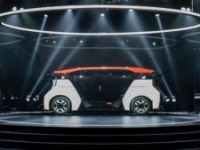
Cruise, the automated wing of General Motors, recently unveiled the new electric-powered Cruise Origin [1], which has no steering wheel, no pedals and no rearview mirror.
The work is "far from done", admitted chief executive Dan Ammam. Though impressive, this futuristic car is not approved to travel on the road. Before it is, extensive testing will be needed to consider not only the car's safety, but also how it will interact with other road users.
The whole UK transport system could be fully automated by 2070 according to the World Economic Forum [2] - but there is a long road ahead. Here are the key things that will need to change first.
- Infrastructure upgrades
Driverless cars ‘see' through data sharing. From traffic lights to motorway signals, driverless cars will use data to understand all the things other drivers use their eyes and ears for.
Since 70 [3]per cent [4] of traffic collisions [5] are caused by human error, they could do so with greater precision.
For this system to work, our roads will need major infrastructure upgrades. This will need to include both street furniture and high-bandwidth data networks such as 5G.
- Stringent safety testing
March 2018 saw the first fatal accident caused by an Uber vehicle driving in autonomous mode. According to a report [6], the car failed to react when 49-year-old Elaine Herzberg walked across the road because its detection software was tuned too far in the direction of ‘false positives' such as plastic bags.
Before driverless cars can be rolled out on a large scale, this technology will need to be fine-tuned and teething troubles ironed out.
- New driving tests
When it comes to telling the difference between inanimate objects and pedestrians, driverless technology can't yet match human perception. This means, at least for the foreseeable future, drivers will need to be able to intervene quickly.
A study found that it took the average driver just under two seconds to regain control - at 50mph, that's a distance of 45 metres.
The gap between the car's mistake or loss of signal and the driver's reaction poses a big safety risk, so managing this is likely to become important for learner drivers of the future.
- Public education
Just as the public is coming to understand how electric vehicles drive - near-silently - so too will they need to understand driverless vehicles.
For the roads to accommodate a mixture of standard and driverless cars, other road users will need the means and knowledge to communicate with a driverless car - to signal "you go first" and so on.
- Insurance hurdles
With driverless cars, who (or what) is insured? It's a question the insurance industry is already beginning to grapple with.
The conundrum forces us to ask what ‘driving' means. For now, driverless car manufacturers complete out-of-court settlements when things go wrong, but when this changes it is likely new laws will be needed to decide what proportion of the blame is shouldered by manufacturers or local authorities.
- Tighter cyber security
If the roads of the future are to be driven by a complex network of computer signals, then there's an obvious elephant in the room. What happens if the system is hacked?
To prevent fast-moving vehicles being weaponised, cyber security will need to become a major priority for road safety agencies.
The government has already passed a cyber security standard for this type of technology, but questions around how these will be enforced, from ‘digital MOTs' to specialist monitoring, remain to be seen.
From connectivity to cyber defence, the UK has a long way to go before hands-free driving prevails.
